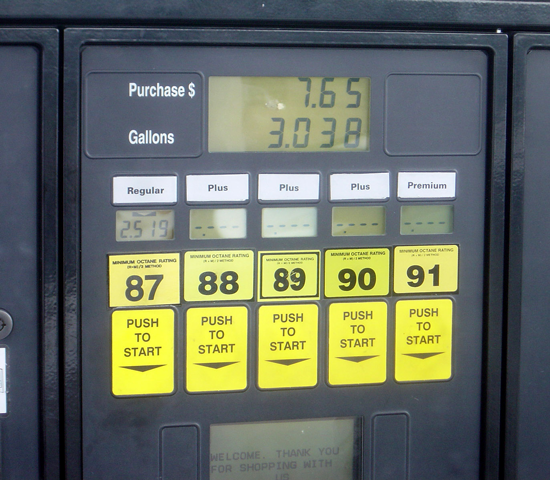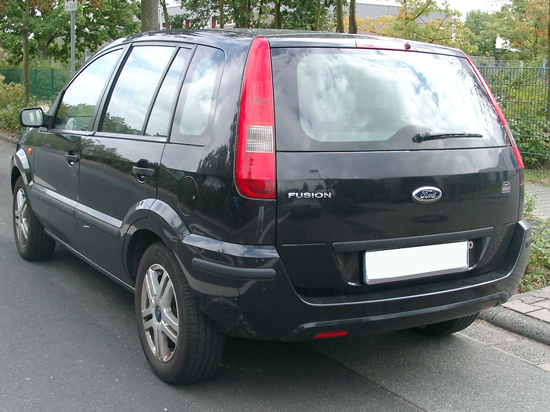Octane Rating
by Andrew Boyd
Today, regular or premium? The University of Houston's College of Engineering presents this series about the machines that make our civilization run, and the people whose ingenuity created them.
Whenever you stop to buy gas for your car, you're faced with a question: what grade of gas to buy? Regular, or one of the premium grades? If you're like me, you probably rely on regular for the simple fact it's cheaper. Gas, after all, is a significant expense these days. So what's the benefit of buying a premium grade?
For an answer, we need to understand a bit about how gas and engines work. Power is created in a car's engine by igniting gas mixed with air to create a controlled explosion. Physics tells us we can get a more powerful explosion by first compressing the gas. In fact, if we compress the gas enough it explodes without having to light it. Diesel engines are built on this principle. Gas burning engines aren't. They require a spark plug to start the explosion.

Internal combustion engine pistons of partial cross-sectional view (Mj-bird/Wikipedia)
Fine so far. But here's the twist. Squeeze the gas in your car's engine too much and, just like a diesel, the gas can explode without lighting it. That's not good for a gas burning engine. You want a nice, smooth explosion set off by the spark plug. When unwanted compression explosions occur, an audible knocking can be heard. The car doesn't perform well and the engine can be damaged. How do we stop these unwanted compression explosions? By choosing the right gas for a particular car. The number on each button at the gas pump — 87, 89, 91, or something similar — is an indicator of how prone the gas is to these unwanted explosions. The number is called the octane rating. The higher the octane rating, the more the gas can be compressed without exploding.

Gas station pump five octane ratings (Wikipedia image)
We're now able to answer our original question: what's the benefit of buying a premium grade gas? For most people, nothing. There is no benefit when looking just at the octane rating.
Car engines are designed to compress gas only so much. Luxury and high performance cars compress gas a lot in order to achieve things like faster acceleration. Most cars, however, are designed to compress the gas far less. They're perfectly fine with regular gas. Premium, with its extra resistance to unwanted compression explosions, doesn't help. It solves a problem most cars simply don't have.

BMW 650i convertible( Wikipedia image)

Ford Fusion rear ( Wikipedia image)
Of course, octane rating is only one measure of a gas. Different gasolines contain different additives to keep engines clean and running smoothly. What's actually in a grade of gas depends on the company that makes it, and considerable research has gone into making ever-better additives. Companies pride themselves on what they've achieved. But unlike the past, all gas contains engine cleaning additives to meet EPA standards. No matter what you use your engine's getting some level of protection.
So what gas to buy? Read your owner's manual and make sure you're getting the right octane level. Just remember that a higher octane level, in and of itself, doesn't help.
I'm Andy Boyd at the University of Houston, where we're interested in the way inventive minds work.
(Theme music)
Notes and references:
Gasoline engines compress an air/gas mixture as alluded to in the initial reference to what is compressed. Thereafter, "gas" is used rather than "air/gas mixture" to simplify reading. Diesel engines compress air then inject gas. The hot, compressed air causes the gas to ignite.
M. Brain. What Does Octane Mean? From the How Stuff Works website: http://auto.howstuffworks.com/fuel-efficiency/fuel-consumption/question90.htm Accessed September 2, 2014.
F. Markus. "Regular or Premium?" Car and Driver, November, 2001. See also: http://www.caranddriver.com/features/regular-or-premium. Accessed September 2, 2014.
This episode was first aired on August 28, 2014.